Ancient Inkstick Made in the Xuande Reign of the Ming Dynasty | A Treasured Writing Tool from the Ming Imperial Court
Product Introduction
This ancient inkstick was crafted during the Xuande reign (1426 – 1435) of the Ming Dynasty, standing as a precious relic among the Four Treasures of the Study in traditional Chinese culture. The inkstick is in an oval – cylindrical shape, with its entire body as black as lacquer. It has a firm and delicate texture. The surface is adorned with gold – painted inscriptions and engraved patterns, showcasing the exquisite craftsmanship and aesthetic style of ink – making in the Ming imperial court. It is a perfect combination of calligraphy art and historical culture, boasting extremely high cultural relic value and collection significance.
Detailed Appreciation
1. Shape and Texture
The inkstick is uniformly black, with a gentle luster that has been developed over the years. On its cross – section, fine layers can be faintly seen, indicating the complex process of traditional ink – making, which involves “thousands of pestles with light glue”. The oval – cylindrical shape is full and well – proportioned, and it feels stable in the hand. This design meets the practical needs of the ancients for easy holding and even force application when grinding ink.
2. Gold – Painted Inscriptions
On the front of the inkstick, six regular – script characters “Made in the Xuande Reign of the Ming Dynasty” are vertically written in gold paint. The calligraphy is upright and solemn, with a strict structure, combining the dignity of imperial utensils and the elegance of literati calligraphy. There is a horizontally written character “Minister” at the top. It is speculated that this inkstick might have been an official – made tribute at that time, reflecting the hierarchical regulations of the monarch – minister etiquette and writing utensils in the Ming Dynasty.
3. Traditional Patterns
The two sides of the inkstick are decorated with symmetrical cloud patterns. The lines are smooth and winding, like auspicious clouds surrounding it, symbolizing good luck and fortune. The top is adorned with a circular round pattern containing simple geometric designs, which echoes the cloud patterns, expressing the traditional Chinese view of the universe of “the sky is round and the earth is square”. All the patterns are engraved with low – relief techniques and then filled with gold paint, creating a strong color contrast with the black inkstick, which is magnificent yet simple and unsophisticated.
Historical Background
The Xuande reign was a prosperous period for culture and art in the Ming Dynasty. Emperor Xuanzong Zhu Zhanji was fond of poetry, calligraphy, and painting, and attached great importance to the quality of writing utensils. The writing utensils made by the imperial workshop were mostly made of carefully selected materials and supervised by famous craftsmen. Therefore, “Xuande – made” products have always been regarded as the peak representatives of Ming Dynasty craftsmanship. Xuande inksticks are rare in the world because of their elaborate selection of materials (traditionally using pine soot and tung oil soot as the main ingredients, supplemented by precious medicinal materials such as pearls and musk) and complex manufacturing processes, and are highly sought after by collectors.
Collection Significance
-
Historical Value: It has witnessed the golden age of writing art in the Ming Dynasty for nearly 600 years and is a living historical relic.
-
Craftsmanship Value: It integrates ink – making, carving, calligraphy, and gold – painting, reflecting the comprehensive achievements of traditional Chinese handicrafts.
-
Cultural Heritage: It carries the Eastern calligraphy culture and philosophical thinking and serves as an important medium for overseas collectors to understand the spirit of traditional Chinese literati.
Maintenance Suggestions
-
Store it in a dry and well – ventilated environment to avoid cracking or mildew caused by moisture.
-
Avoid direct contact with moisture and chemicals, and handle it gently to prevent damage to the gold paint and patterns from collisions.
-
It is recommended to store it separately with a soft flannel or in a writing utensil box, away from direct sunlight.
This ancient inkstick is a rare treasure for the collection of Eastern writing utensils. It is suitable for collectors who are passionate about the history of the Ming Dynasty in China, calligraphy art, and traditional craftsmanship. It is also a classic piece for displaying the profound Eastern cultural heritage in a study.
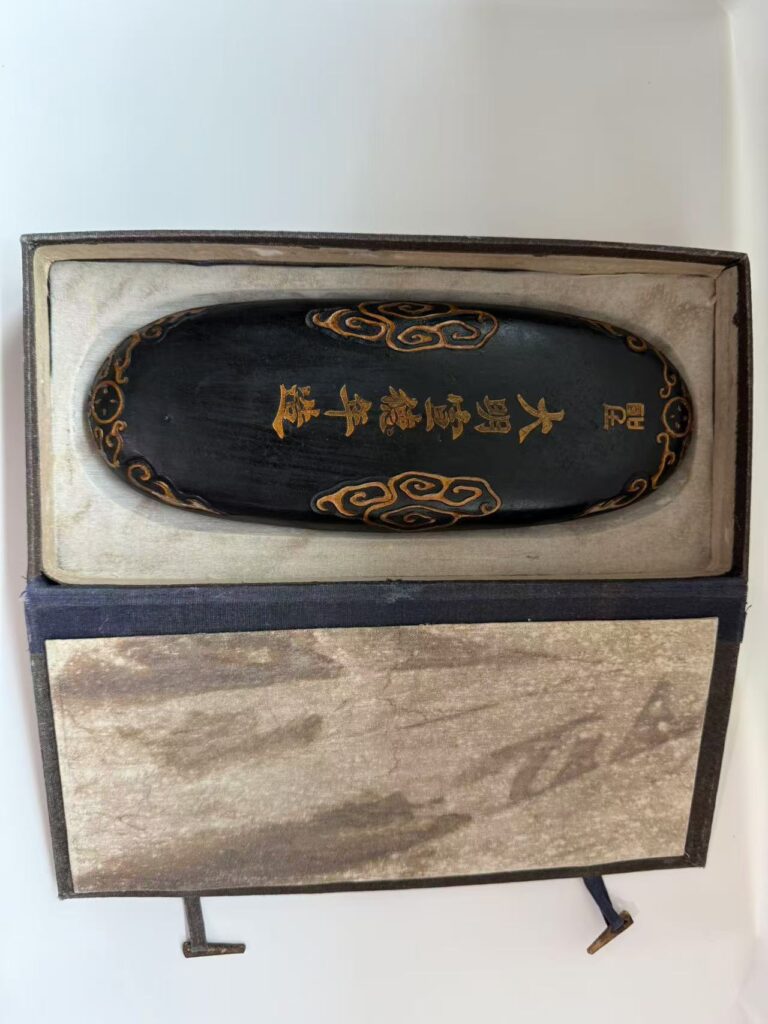
大明宣德年造古墨 | 明代宫廷文房瑰宝
產品簡介
此件為明代宣德年間(1426-1435年)所製古墨,屬中國傳統文房四寶之珍貴遺存。墨體呈橢圓柱形,整體漆黑如漆,質地堅實細膩,表面以金彩題字及鏤刻紋飾裝飾,展現明代宮廷製墨的精湛工藝與審美風範,是書法藝術與歷史文化的結合體,具有極高的文物價值與收藏意義。
細節賞析
1. 形制與質地
墨體通體黝黑,經久歲月沉澱呈現溫潤光澤,斷面隱約可見細密層理,顯示傳統制墨「輕膠十万杵」的繁複工序。橢圓柱造型飽滿勻稱,手感沉穩,符合古人研墨時便於握持、受力均勻的實用需求。
2. 金彩題字
墨體正面豎列金彩題寫「大明宣德年造」六字楷書,筆法端正莊重,結體嚴謹,兼具宮廷器物的威儀與文人書法的雅緻。頂端橫書「臣」字,推測此墨或為當時官造進貢之物,體現明代君臣禮制與文房用器的等級規制。
3. 傳統紋飾
墨體兩側以對稱雲紋裝飾,線條流暢婉轉,如祥雲環繞,寓意吉祥福瑞;頂部飾有圓形團紋,內含簡約幾何圖案,與雲紋呼應,形成「天圓地方」的傳統宇宙觀表達。紋飾均以淺浮雕工藝鏤刻,再填金彩,與漆黑墨體形成強烈色彩對比,華美而不失古樸。
歷史背景
宣德年間為明代文化藝術鼎盛時期,宣宗朱瞻基雅好詩文書畫,極重文房用器品質,宮廷造辦處所製文房器物多精選材料,邀請名匠督造,故「宣德製」向來被視為明代工藝的巔峰代表。宣德墨因用料考究(傳統以松煙、桐油煙為主料,佐以珍珠、麝香等貴重藥材)、工藝繁複,存世量稀少,向為藏家追捧。
收藏意義
-
歷史價值:距今近600年,見證明代文房藝術黃金時代,是活態的歷史文物。
-
工藝價值:集制墨、雕刻、書法、金彩於一體,體現中國傳統手工藝的綜合成就。
-
文化傳承:承載東方書法文化與哲思,為海外藏家了解中國傳統文人精神的重要媒介。
保養建議
-
存放於乾燥、通風環境,避免潮濕導致墨體開裂或發霉。
-
避免直接接觸水氣與化學製品,輕拿輕放以防碰撞損傷金彩與紋飾。
-
建議搭配軟質絨布或文房盒單獨收納,遠離陽光直射。
此件古墨為東方文房收藏之難得珍品,適合熱愛中國明代歷史、書法藝術及傳統工藝的藏家珍藏,亦是書房陳設中展現東方文化底蘊的典範之作。

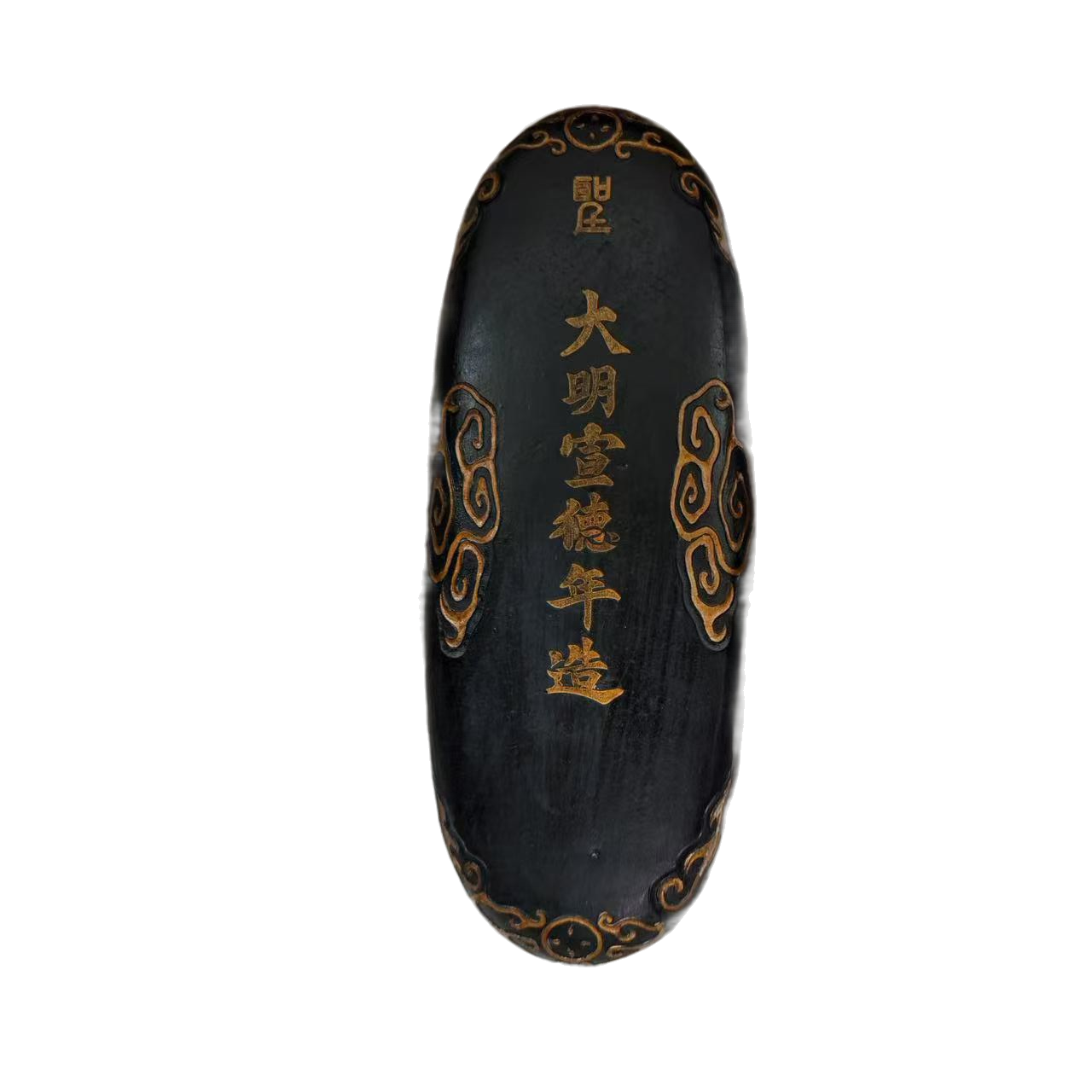
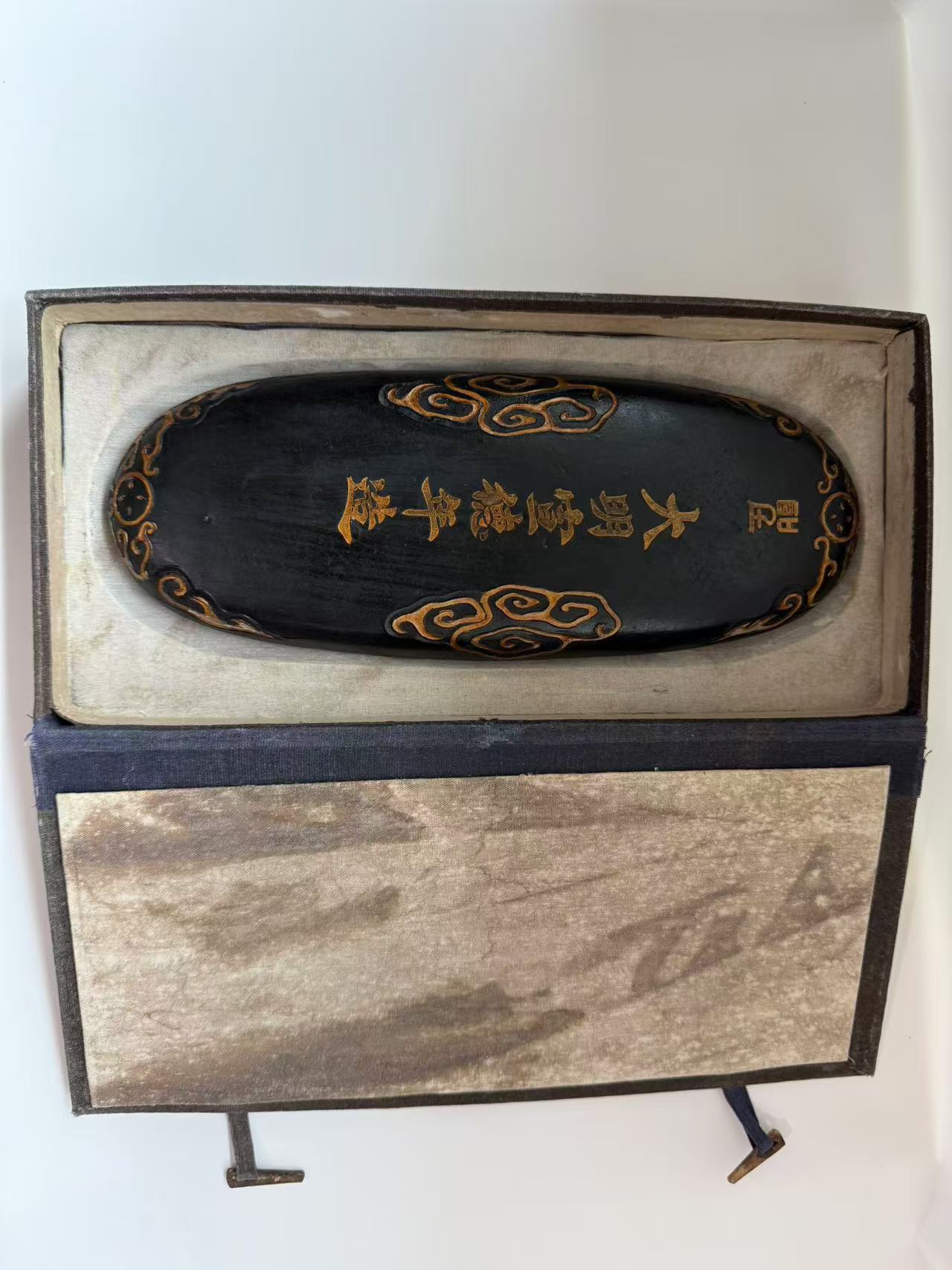
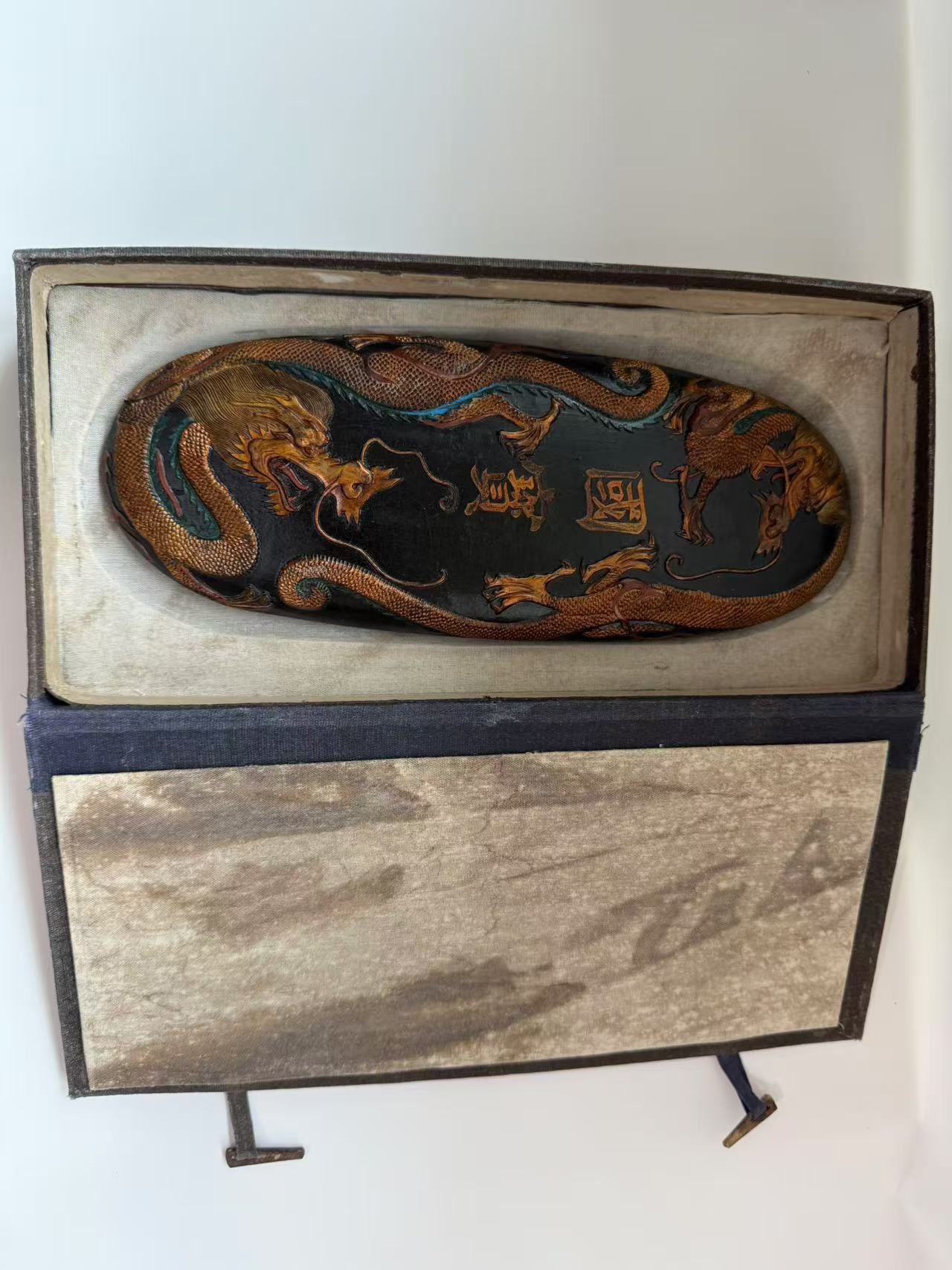
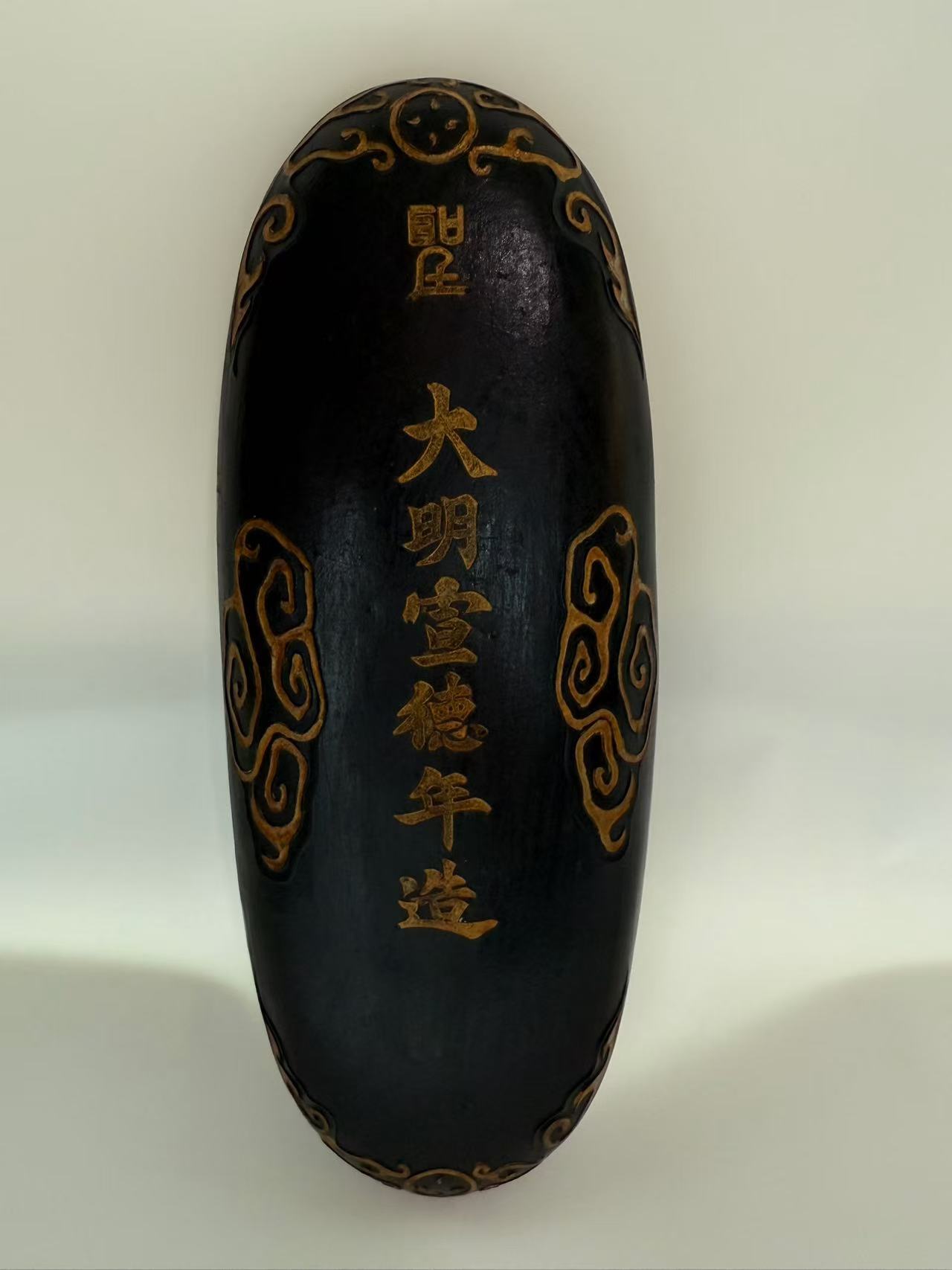
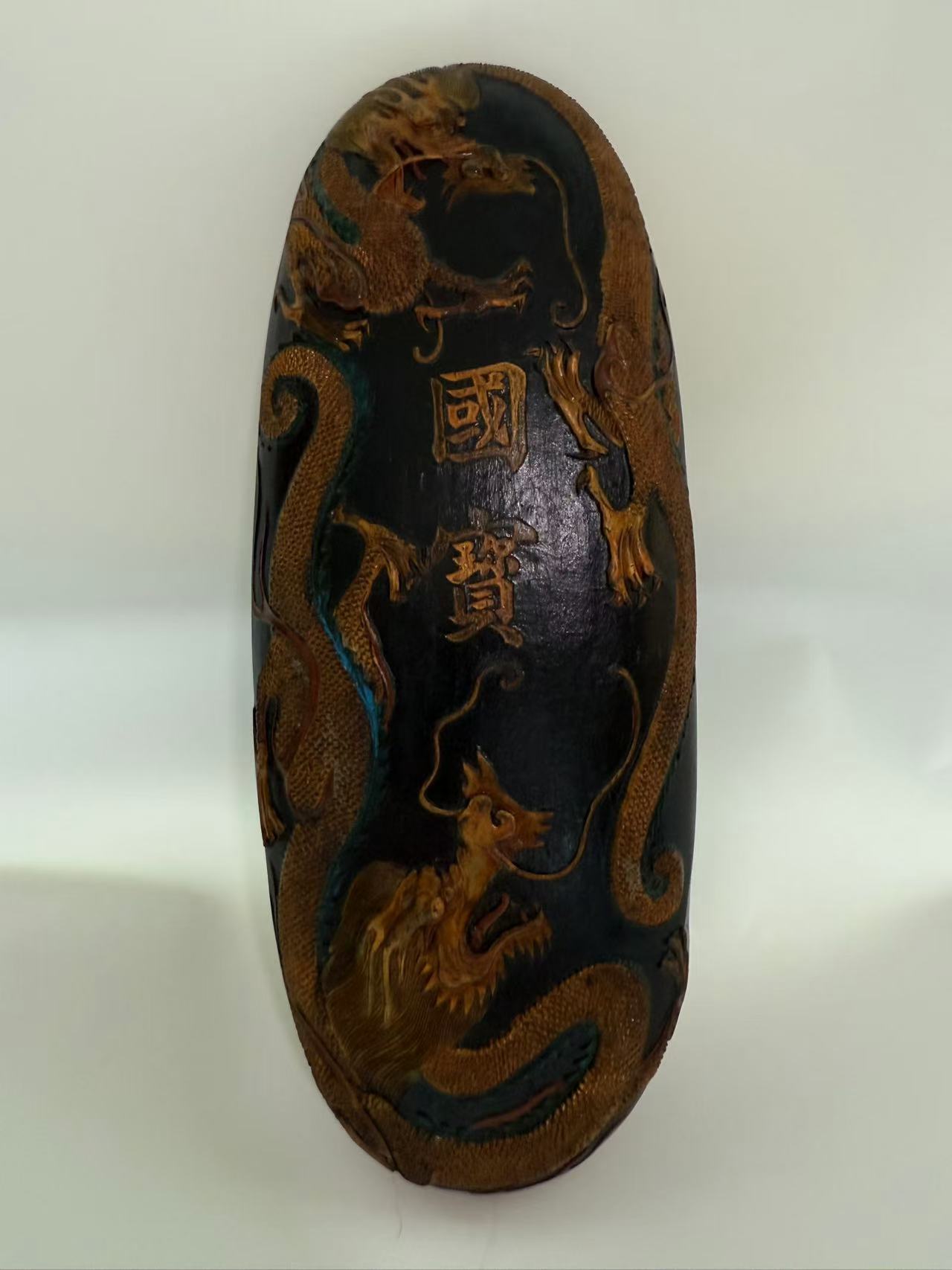

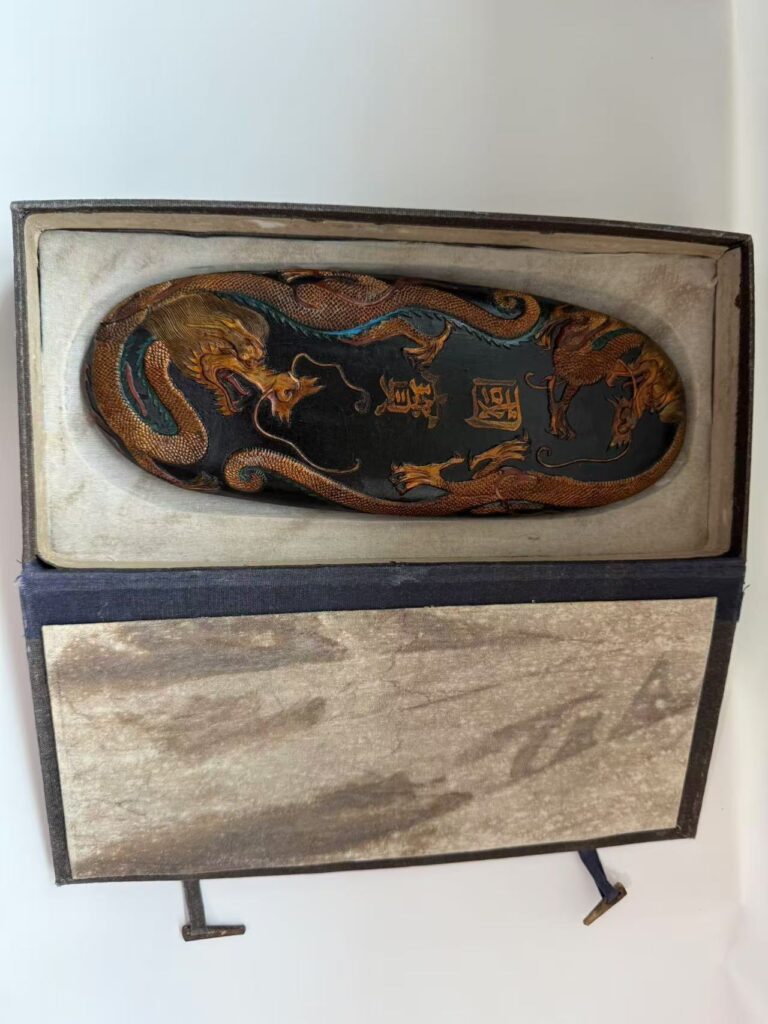
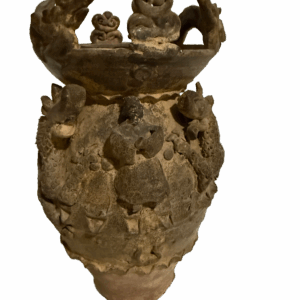
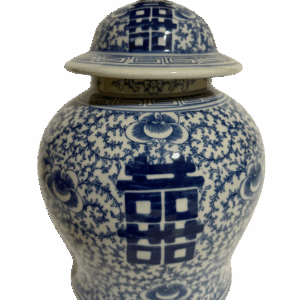
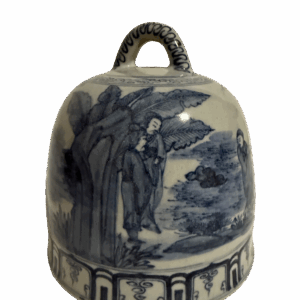
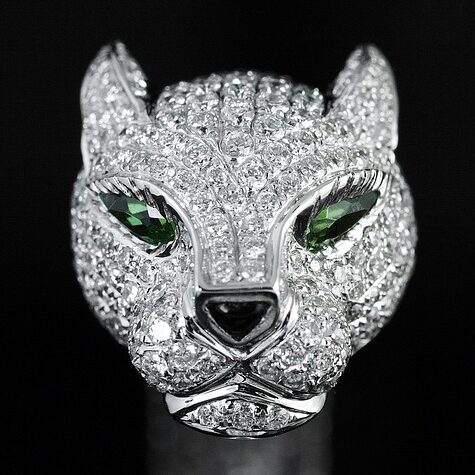
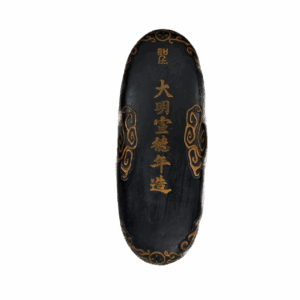
Reviews
There are no reviews yet.